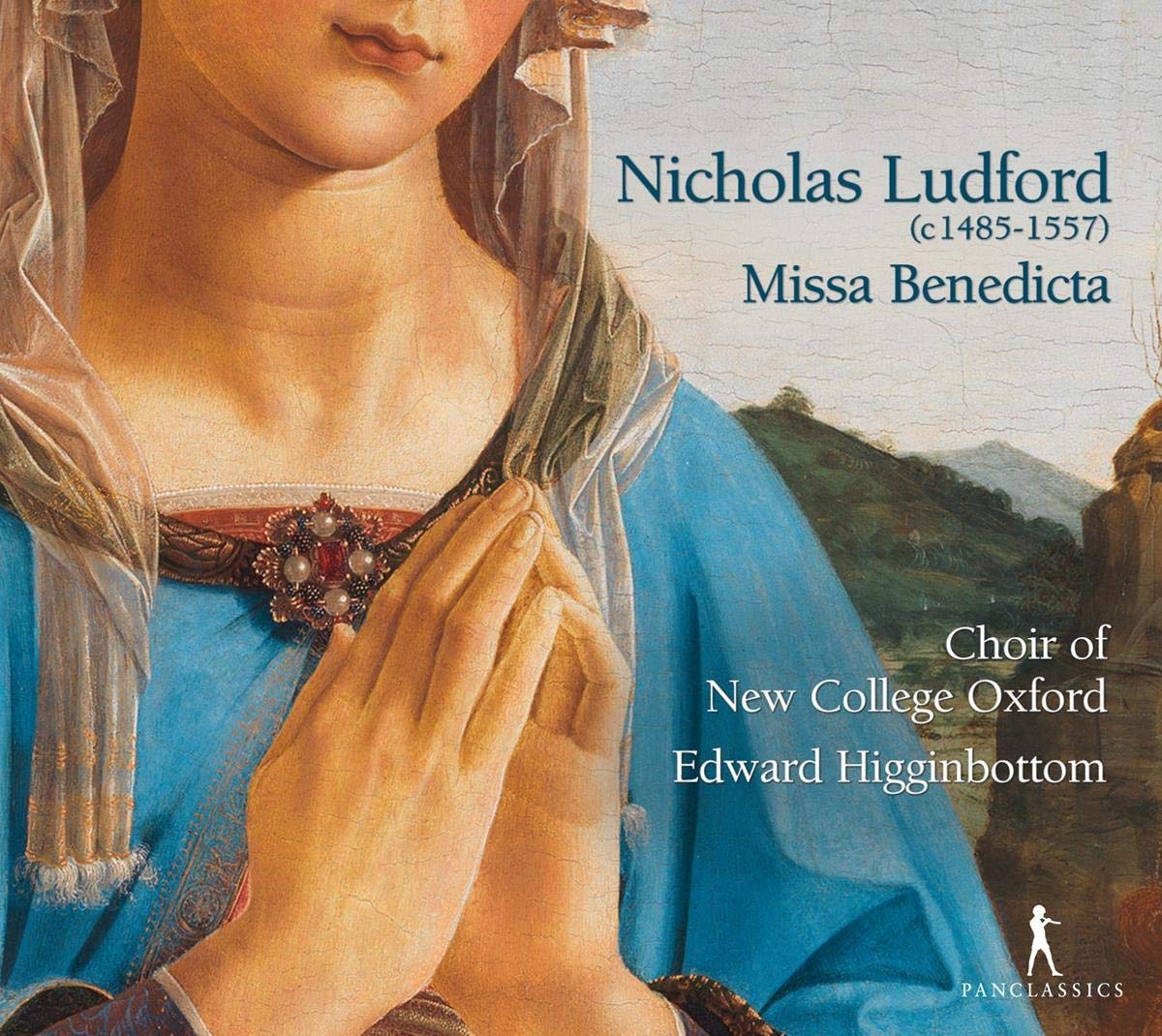Choir of New College Oxford, Edward Higginbottom
63:13
Pan Classics PC 10403
Nicholas Ludford (1485-1557) is one of the greatest Tudor composers. This is crowded territory, which begins with some musical giants from the Eton Choirbook such as John Brown and Robert Fayrfax, and climaxes with Byrd. Along the way, to name but a few, there are the Three, or Great, T’s – Taverner, Tye and Tallis – and John Sheppard. I pick out Sheppard deliberately because his music was overlooked for a long time, not only after the original Tudor revival in Victorian times and subsequently after the publication of the ten volumes of Tudor Church Music during the 1920s. In fact his music would have been published in the planned second series, one of many casualties of the Wall Street Crash, but the music of Ludford eluded or was overlooked by all and sundry until quite recently. The breakthrough came with the recordings by The Cardinall’s Musick (TCM) of masses for five and six voices, plus motets, released on four CDs, the most recent in 1994, coinciding with a major article about the composer by David Skinner in Musical Times. Since then, we now have the luxury of all his masses for five and six voices on disc, thanks to the superb recordings by Blue Heron of music from the Peterhouse partbooks based upon the remarkable restorative editing of Nick Sandon, plus a couple of recordings of his smaller masses. There are now even alternative versions of two of the masses originally recorded by TCM – just as well because three of their original recordings are not currently available.
The recording under review is of one of these alternative versions. It was originally released in 2007 on another label named K617 (numbered K617206) and additionally includes two of Ludford’s substantial antiphons, Ave cuius conceptio and Domine Jesu Christe. Higginbottom takes the former at quite a lick – 8’03 against the 9’22 of the premiere recording in 1993 by The Cardinall’s Musick under Andrew Carwood, and even the 8’51 of Blue Heron – but although the performance sounds rather driven and a tad soulless, Ludford’s luxuriant and often demanding counterpoint is for the most part audible. In a letter to Early Music published in May 1995 (page 366) I note that Ludford’s setting of the words “fecunditas” in this antiphon seems to suffuse the opening of Sheppard’s huge ritual antiphon Media vita which I go on to suggest might have been composed in memory of Ludford; given that Sheppard’s masterpiece is among the finest musical works of the Renaissance, it would be a fitting and deserved tribute to his predecessor. Domine Jesu Christe is a much more relaxed and expansive affair but still expresses a sense of purpose and direction. The movements of the mass itself are interspersed with Gregorian chant. As Edward Higginbottom observes in his notes, each movement of the mass begins with the same musical setting, rather than an actual head motive. This opening passage contains sumptuous and striking harmonies, conspicuous among those which crop up throughout the course of all four movements, and there are also sinuous passages of reduced scoring in which fewer voices are used per part, providing textural variety. Stylistically the music is clearly in the English tradition of the Eton Choirbook with no nods towards the Continent; indeed, at the beginning of the Credo, just after the head motive that is not really a head motive, there is a passage that has resonances of the old faburden technique, from the words “Et in unum Dominum”.
New College’s singers do ample justice to Ludford’s thrilling music, the boys with a bright tone possessing a slight cutting edge, which is appropriate here given the rich, bottom-heavy scoring (TrATTBB), and the men blending well while keeping each line distinct, the whole choir making the most of Ludford’s interesting sonorities, such as the final chord of the first “excelsis” in the Sanctus. For composer and choir at their collaborative best listen to the passage in the second Agnus, led by the high voices drifting sublimely in thirds. This is great music, by a great composer, one whom the world of music should acknowledge, celebrate and acclaim as such.
Richard Turbet
